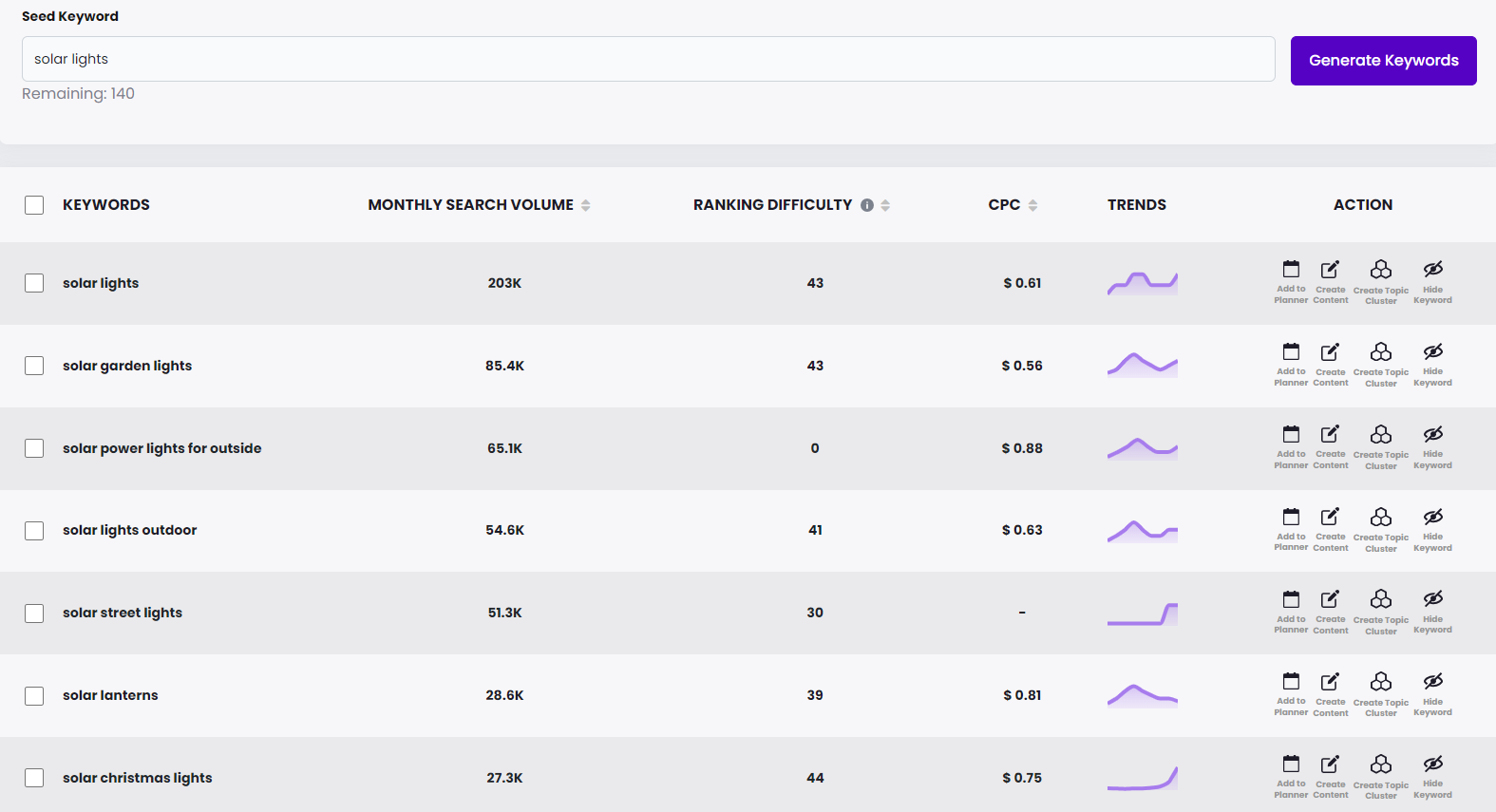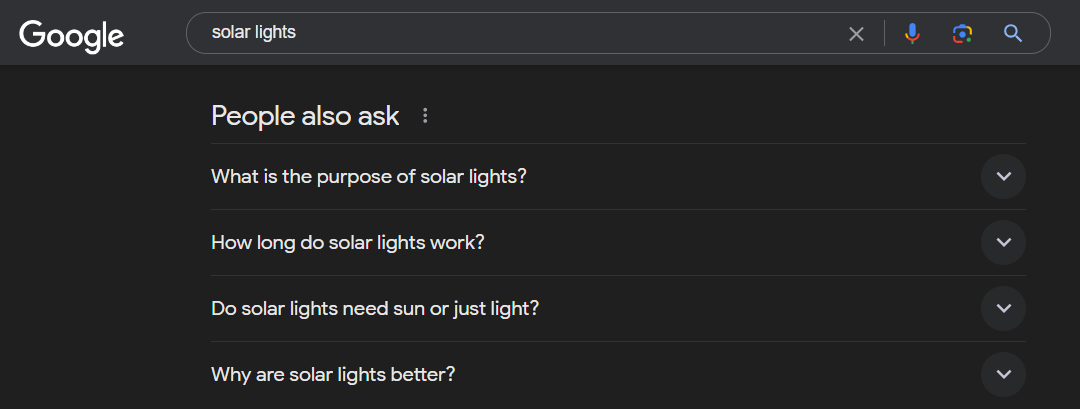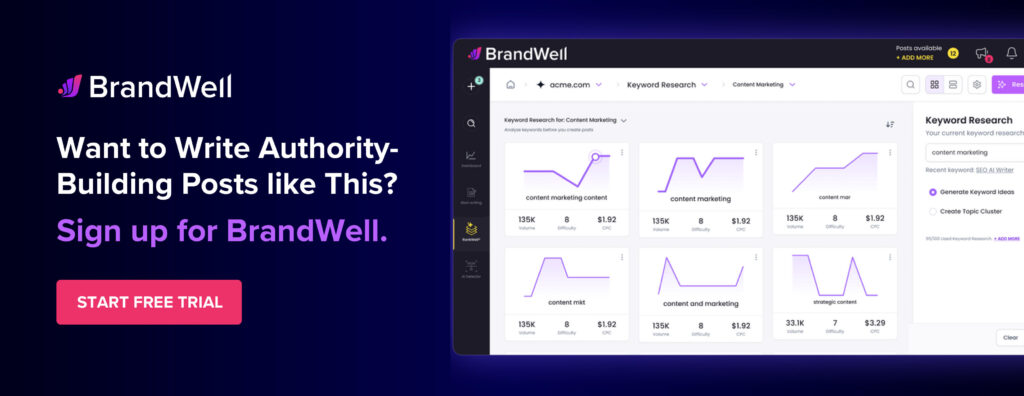Discover top guides, trends, tips and expertise from AIO Writers
How Many SEO Keywords Per Page Should You Target?
Julia McCoy
Thursday, 2nd May 2024
Ever wondered how many SEO keywords per page can transform your content into a search engine darling?
It’s like finding the perfect seasoning level in cooking – too little, and it’s bland; too much, and it overwhelms. This balancing act is crucial not just for flavor but for making sure Google sits up and takes notice.
In today’s blog post, we’ll unravel this magic number without falling into the trap of keyword stuffing or ending up with sparse, under-optimized pages. Because yes, there is such a thing as an ideal blend that matches user experience with search engine expectations.
Let’s find out how many SEO keywords per page you should target to climb up those SERPs.
Table Of Contents:
- How Many SEO Keywords Per Page is Optimal?
- How to Determine How Many SEO Keywords to Use
- Identifying High-Value Keywords for Your Pages
- Adapting to Evolving Search Intent and User Needs
- Best Practices for Keyword Optimization
- FAQs – How Many Seo Keywords Per Page
- Conclusion
How Many SEO Keywords Per Page is Optimal?
As with most things SEO, there’s no one-size-fits-all answer to that question.
The optimal number of keywords per page depends on various factors like your content length, topic, competition, and target audience.
When deciding how many keywords to target per page, consider these key factors:
- Word Count: Longer content can naturally incorporate more keywords without feeling forced or spammy.
- Topic: Some topics are more complex and require a wider range of keywords to cover comprehensively.
- Competition: If you’re targeting highly competitive keywords, you may need to focus on fewer keywords per page to avoid spreading yourself too thin.
- Intent: Understanding the intent behind keywords can help you determine which ones to prioritize on each page.
How to Determine How Many SEO Keywords to Use
Here are some guidelines to consider when determining how many SEO keywords to use per page:
1. Focus on a Primary Keyword
Each page should target one primary keyword or key phrase. This keyword should accurately represent the main topic or theme of the page.
2. Use Semantic Keywords and Variations
Incorporate variations and related LSI keywords naturally throughout the content. These are words and phrases that are contextually relevant to the main keyword.
3. Keyword Density
Aim for a keyword density that feels natural. Keyword density refers to the percentage of times a keyword appears on a page compared to the total number of words on that page.
While there’s no magic number, a study suggests that keyword density is less important than the relevance of the keywords used. A good rule of thumb is to keep it around 1-2% to avoid over-optimization.
Instead of obsessing over keyword density, focus on creating high-quality, engaging content that naturally incorporates your keywords.
4. Word Count
Longer content allows for a more natural integration of keywords and variations. For long-form articles (e.g., over 1000 words), you can include more keywords compared to shorter pieces.
Let’s look at this example:
Let’s say you have a 1000-word blog post targeting the keyword “best digital cameras.” You could use the primary keyword 3-5 times throughout the content.
Then include related keywords like “top digital cameras,” “digital camera reviews,” or specific camera model names in your sentence.
The optimal number of SEO keywords per page will depend on the context of your content, the competitiveness of your target keywords, and the user experience you aim to deliver. Always prioritize creating high-quality, user-friendly content that naturally incorporates relevant keywords without sacrificing readability or engagement.
Identifying High-Value Keywords for Your Pages
To determine which keywords to target on each page, you’ll need to conduct thorough keyword research. This process involves identifying the keywords your target audience is using to search for content related to your topic, and evaluating their search volume, competition, and relevance.
Start by brainstorming a list of potential keywords related to your topic. Consider the main theme of your content, as well as any subtopics or related concepts you plan to cover. You can also look at your competitors’ pages to see which keywords they’re targeting.
Once you have a list of potential keywords, use keyword research tools to gather data on their search volume, competition, and relevance.
There are many keyword research tools available, both free and paid, that can help you identify high-value keywords for your content. Some popular options include:
- Google Keyword Planner: A free tool that provides keyword ideas and search volume data based on your seed keywords.
- Ahrefs Keyword Generator: A paid tool that offers a wide range of keyword research features, including keyword ideas, search volume, keyword difficulty, and more.
- Answer the Public: A free tool that generates keyword ideas based on autocomplete data from search engines.
If you’re using BrandWell to write your content, you don’t need a separate keyword research tool to find those golden phrases. Right beside the RankWell long-form writer is a Mangools-powered keyword research section that can generate hundreds of keywords that are relevant to your seed topic.
Here’s what the BrandWell keyword tool looks like:

From the AI-generated data, look for keywords that have a high search volume (meaning lots of people are searching for them) but relatively low competition (meaning fewer pages are trying to rank for them).
BrandWell also allows you to create topic clusters around primary keywords, which helps you build authority in your niche.
Adapting to Evolving Search Intent and User Needs
As much as we’d like them to, keywords don’t exist in a vacuum. The way people search and what they’re looking for is constantly evolving, and it’s our job as content creators to keep up.
Search intent is the why behind a user’s search query. Are they looking to buy something, learn more about a topic, or find a specific website?
To rank well and provide value to your audience, your content needs to match the user search intent. If someone searches for “best solar lamps,” they’re probably looking for reviews and recommendations, not a history of the solar industry.
By understanding and catering to search intent, you can create content that truly resonates with your target audience and ranks well in search results.
In addition to search intent, it’s important to consider the needs and questions of your target audience. What problems are they trying to solve? What information are they seeking?
One way to uncover these needs is to look at the “People also ask” section in Google search results. These are common questions that people search for related to your topic.

By addressing these questions and needs in your content, you can provide real value to your readers and establish yourself as a trusted resource in your industry.
The key is to stay attuned to the evolving needs and preferences of your target audience. By continuously adapting your content strategy, you can stay ahead of the curve and provide the most relevant, valuable content possible.
Best Practices for Keyword Optimization
Now that you’ve done your research and identified your target keywords, it’s time to put them into action. But how do you incorporate keywords into your content without sounding like a robot?
It’s all about finding the right balance.
The key is to use your keywords in a way that flows with your content. Avoid keyword stuffing at all costs — not only will it turn off your readers, but it can also get you penalized by search engines.
Instead, focus on creating high-quality, engaging SEO content that incorporates your target keywords organically. Use them in your headlines, subheaders, and throughout your paragraphs, but don’t force them where they don’t belong.
Find more keyword optimization strategies here.
Remember, your primary goal is to provide value to your audience. If you’re writing SEO-friendly content that informs, entertains, or solves a problem, the keywords will fall into place naturally.
FAQs – How Many Seo Keywords Per Page
How many words should be on a page for SEO?
For SEO, it’s recommended to have at least 300 words on a page to provide enough content for search engines to understand the topic and context. However, longer content (e.g., 1000+ words) often performs better in search results, especially for competitive keywords, as it allows for more comprehensive coverage and keyword integration.
How many times should my keyword appear on a page?
Strike a balance. Aim for a 1-2% keyword density to avoid stuffing while staying relevant.
How many keywords can you rank for with one page?
You can target up to three closely related keywords or phrases without diluting your content’s focus.
Is 500 words enough for SEO?
Sure, if the content is quality and focused. But more in-depth pieces often perform better in rankings.
Conclusion
Remember those early days when we’d toss in keywords like spaghetti, hoping something would stick? Well, we’ve evolved since then. Now, we understand that precision is better than brute force, and quality matters more than quantity in the realm of SEO.
The sweet spot lies somewhere between solving readers’ problems and keeping search engines happy. It’s not about hitting a specific word count but about forging genuine connections with your audience through well-crafted content, subtly peppered with keywords to catch Google’s attention without raising any eyebrows.

UNLOCK YOUR POTENTIAL
Long Headline that highlights Value Proposition of Lead Magnet
Grab a front row seat to our video masterclasses, interviews, case studies, tutorials, and guides.



